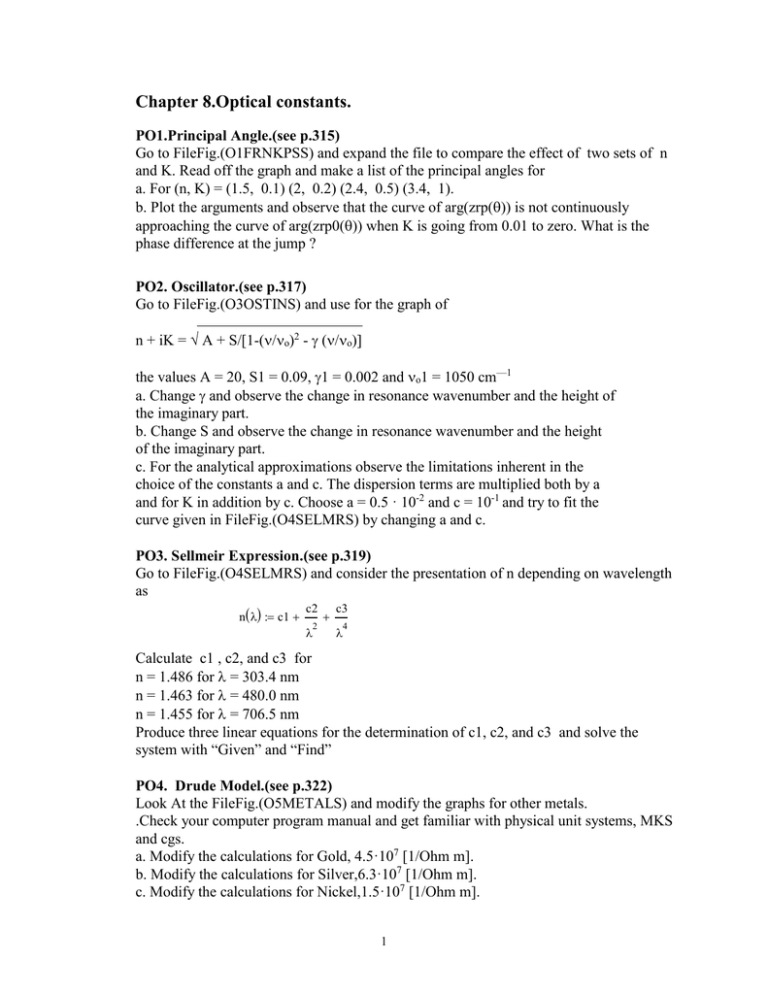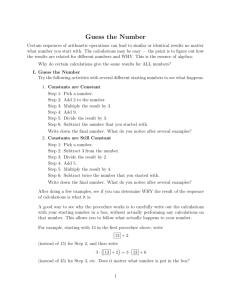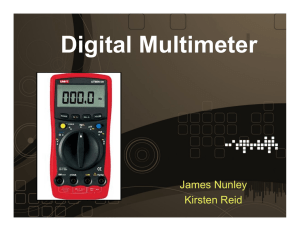Chapter 8.Optical constants.
advertisement

Chapter 8.Optical constants. PO1.Principal Angle.(see p.315) Go to FileFig.(O1FRNKPSS) and expand the file to compare the effect of two sets of n and K. Read off the graph and make a list of the principal angles for a. For (n, K) = (1.5, 0.1) (2, 0.2) (2.4, 0.5) (3.4, 1). b. Plot the arguments and observe that the curve of arg(zrp()) is not continuously approaching the curve of arg(zrp0()) when K is going from 0.01 to zero. What is the phase difference at the jump ? PO2. Oscillator.(see p.317) Go to FileFig.(O3OSTINS) and use for the graph of n + iK = A + S/[1-(/o)2 - (/o)] the values A = 20, S1 = 0.09, 1 = 0.002 and o1 = 1050 cm—1 a. Change and observe the change in resonance wavenumber and the height of the imaginary part. b. Change S and observe the change in resonance wavenumber and the height of the imaginary part. c. For the analytical approximations observe the limitations inherent in the choice of the constants a and c. The dispersion terms are multiplied both by a and for K in addition by c. Choose a = 0.5 · 10-2 and c = 10-1 and try to fit the curve given in FileFig.(O4SELMRS) by changing a and c. PO3. Sellmeir Expression.(see p.319) Go to FileFig.(O4SELMRS) and consider the presentation of n depending on wavelength as n c1 c2 2 c3 4 Calculate c1 , c2, and c3 for n = 1.486 for = 303.4 nm n = 1.463 for = 480.0 nm n = 1.455 for = 706.5 nm Produce three linear equations for the determination of c1, c2, and c3 and solve the system with “Given” and “Find” PO4. Drude Model.(see p.322) Look At the FileFig.(O5METALS) and modify the graphs for other metals. .Check your computer program manual and get familiar with physical unit systems, MKS and cgs. a. Modify the calculations for Gold, 4.5·107 [1/Ohm m]. b. Modify the calculations for Silver,6.3·107 [1/Ohm m]. c. Modify the calculations for Nickel,1.5·107 [1/Ohm m]. 1 d. Modify the calculations for Lead,0.5·107 [1/Ohm m]. e. Compare the graphs for the long wavelength region. At what frequency have the absolute values of n and K about the same value ? At what frequency have the optical constants of all metals about the same value ? PO5. Skin Depth.(see p.325) Look at FileFig.(O6SKINS) and calculate the penetration depth for the intensity. Check your manual and get familiar with physical unit systems, MKS and cgs. a. Modify the calculations for Gold, 4.5·107 [1/Ohm m]. b. Modify the calculations for Silver,6.3·107 [1/Ohm m]. c. Modify the calculations for Nickel,1.5·107 [1/Ohm m]. d. Modify the calculations for Lead, 0.5·107 [1/Ohm m]. PO6. Reflected Intensities.(see p.328) Make graphs of R = ((n-1)2 + K2)/ ((n +1)2 + K2) for Copper, Gold, Silver, and Aluminum in the following spectral regions: a. The Ultra Violet: 100 - 400 nm, b. The Visible: 400 - 800 nm c. The Near Infrared: 800 - 2000 nm d The Mid-Infrared: 2 - 20 microns. PO7. Phase Angle.(see p.328) Look at FileFig.(O8ARDELS) of the graph of the difference of the arguments of zrp and rzs depending on specific values of n and K. See also PM5 and FileFig.(M3FRN2S) and (MA3DIFINTRO) a. Change the optical constants and plot a graph of depending on a range of values of n for fixed K and three values of , e.g. 35, 45, 55. b. Change the optical constants and plot a graph of depending on a range of values of K for fixed value of n and three values of , e.g. 35, 45, 55. . 2






